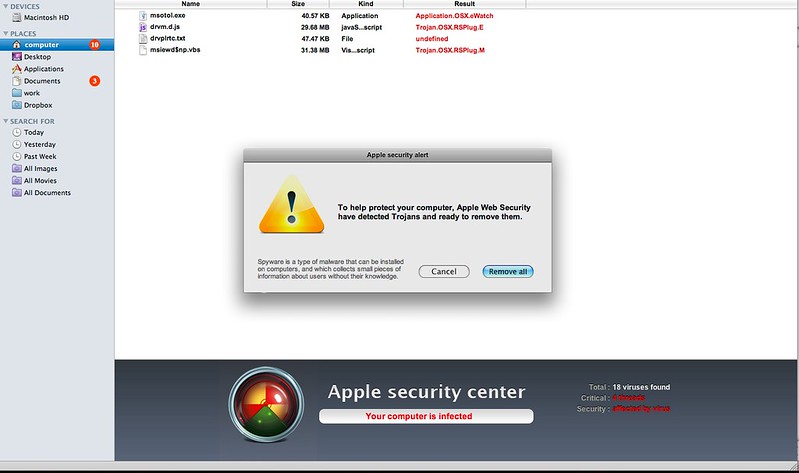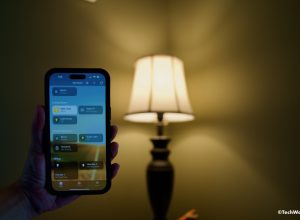Undoubtedly, Apple products need no introduction. Top-quality and stylish computer equipment and portable gadgets have long been loved by connoisseurs of highly developed technologies, which led to the fact that many users of the Windows operating system changed it to a more convenient and intuitive macOS interface.
And although this operating system is commonly known as a much more reliable and convenient alternative to the operating system from Microsoft Corporation, it is still vulnerable to viruses and various types of malicious programs. However, it seems as though owners of Macs or MacBooks believe they will never have to find ways to remove spyware from their devices. So, what is the truth? Let’s get this straight.
Top 3 Excuses for Not Removing Viruses from Mac
It’s no secret that many fans of Apple’s operating system consider the need to check it for viruses a big exaggeration. So, what are their main pretexts for not scanning their devices?
- All viruses are created for Windows users. There are no viruses written for Mac.
- The Mac operating system is completely protected from viruses and malware infection.
- My antivirus for Mac can detect and destroy harmful programs on its own. I don’t need to run the virus scan myself.
So, Do Viruses for Mac Exist or Not?
As you may have deduced, the opinion that macOS is sufficiently protected, and no viruses can attack Apple computers, is entirely misguided. There are harmful applications for Apple products, but they are often less than for computer equipment powered by Windows, and it is quite a challenge to “catch” them.
The developers of this in-demand operating system are on the constant lookout for the “weak spots” of macOS, and external programs are being trapped in a sandbox, prohibiting access to important files. The measures taken reduces the risk of the infection of the Apple operating system to a minimum. The viruses and malware cannot enter the system while the user explores the Internet or receives an email containing a possible threat.
To allow the malicious software to take control of the system, the user is usually tricked into granting it the access to system data or private information. And since such a process generally requires entering the admin password, it is unlikely that this can be done by chance.
The Way Your Mac Gets Attacked by a Virus
The authors of malicious software have to make the user to manually install the dangerous app and thusly provide them with full access to their computer. For this purpose, junk mail and multiple banner advertisements are used, alongside forcing Internet surfers to click on decoy links. What they are trying to do is compel the victim to think that their machine is under some serious threat.
Further, disguised as the solution to the arisen problem, a free-of-charge virus protection program is offered, which is, in reality, a harmful software. The Mac owner installs such malware, grants it all required permissions, and then is robbed of their personal data, sent straight to its creator, who’s ready to take advantage of the received information.
What Can Viruses Do to Your Mac?
The overwhelming number of the existing malware for Mac is built to unlawfully retrieve valuable data. These viruses can steal address book information, contacts, and even passwords or bank card details. There are nocuous utilities that exploit computer performance, making your MacBook or iMac, for instance, to mine crypto coins for the virus’s owner or help carry out a DDoS or DoS attack on any virtual resource.
Viruses that can seriously damage macOS or permanently block access to your Mac with confidential information are almost non-existent. There are individual pieces of malicious code that are able to implement this on the Internet, but there is no complete and highly threatening mass infection solution.
Spamming malware programs showing myriads of advertising banners on the screen independently go to the adult content websites or send mass notifications to your friends. Yet, it is more relevant for Microsoft’s operating system, and to create something like this for macOS is almost impossible.
How Can You Protect Your Mac from Viruses?

Virus scanners can give endow the victim with overconfidence and lull them into a false sense of security. The use of such applications is more reasonable for Windows-equipped machines than for iMacs and MacBooks. The developers have done their best to minimize risks and “shield” macOS computer equipment from malware. As the owner of Apple products, you need to stick to simple security principles to avoid losing your data:
- First of all, update the operating system to the most recent version available for your device. The majority of new patches eliminate the flaws and bugs in the system’s protection, which can be exploited by virus makers.
- Then, be sure to make the App Store your primary resource of applications, or resort to the official websites of particular programs and game distribution platforms like Steam.
- Thirdly, do not follow the questionable links or go to suspicious sites on the web.
- Fourthly, avoid opening attachments sent to you via mail or messaging apps by unknown recipients.
- Finally, in case you need to work with a file downloaded from the Internet, check it beforehand through a virtual virus scanner.
The abovementioned recommendations may seem too straightforward, but they are time-proved. To receive a more detailed consultation on how to protect your MacBook or iMac, feel free to contact qualified MacPaw specialists.
Disclosure: We might earn commission from qualifying purchases. The commission help keep the rest of my content free, so thank you!



